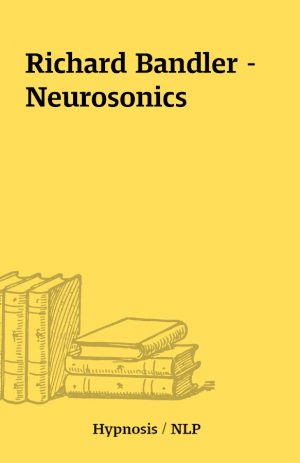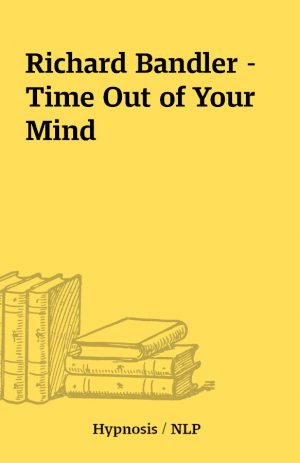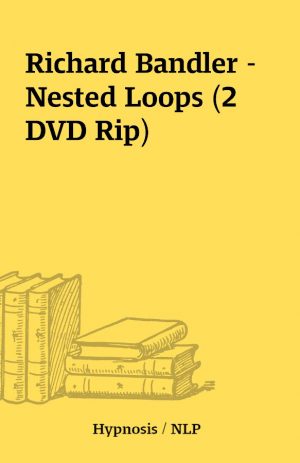E. A. Barnett – Analytical Hypnotherapy Principles and Practice
Analytical Hypnotherapy Principles and Practice – E. A. Barnett
[1 eBook – PDF]
Description
!!! elib.tech Exclusive !!!This is a GB product … sharing elsewhere will result in being banned.Mega Hypnosis and Hypnotherapy Books Group Buy is a review by Dr. Robert Dupe. I was somewhat daunted at first in having to review such a thick volume on hypnotherapy (500 pages). However the book is well laid out and written in language that we can all comprehend. The book is structured in two main parts; part one leads us gently into the history of hypnoanalysis and progresses to topics which have been covered many times by other authors, including the nature of hypnosis and the various hypnotic phenomena.There is a short section on the induction of hypnosis, including the establishment of ‘rapid hypnosis’, although the latter involves physical closure of the eyelids which some patients might find a little heavy handed! The theory of analytical hypnotherapy is well covered and the author concentrates on the aspects of transactional analysis and the importance of the resolution of parent child ego conflicts utilising help form the adult in hypnosis. The importance of ideomotor signalling is discussed fully as this is obviously an important part of the analytical procedure, and may be especially of value in cases where patients are reluctant to talk in trance.I was pleased to note that reframing was discussed and mentioned at several stages in the book with good explanations of the two main aspects of reframing, i.e. both the intention and the behaviour itself. I personally found it difficult to accept the value in regression to the pre-birth and peri-birth experiences in a patient’s life in order to treat symptoms presenting later in life, however if the patients unconscious believes that their problem stems from this part of their life and the technique allows resolution of the problem, then this is all that matters. It is said that ‘one picture is worth a thousand words’ and to this end the text is illustrated with a number of line diagrams in part one. Although one or two of the latter may be useful in helping the reader to understand certain concepts, such as the conditioned reflex, I am not sure that all of the diagrams assist in clarification of the text to any great extent, although they do allow the reader a brief break from concentrating on the written word. The graphs presented in the appendix are however useful and serve to illustrate relationships between variables in an easily assimilated format.Part two of the book describes uncovering the critical experience and gives good examples using direct transcripts of how to achieve this, together with many practical examples taken from Dr. Barnett’s wealth of experience. Most of the problems encountered by the clinical hypnotherapist including, anxiety, phobias, smoking, addiction of substances, psychosexual dis-orders, alcoholism and others are discussed in relation to the analytical approach. I was pleased that the author has devoted a chapter to the use of the analytical approach in children; all too often the use of clinical hypnosis in children is either overlooked or only mentioned in passing.Dr. Barnett gives detailed transcripts of clinical problems in children and how these have been resolved by the use of the basic analytical approach to hypnotherapy. The chapter towards the end of part two attempts to clarify the significance of the depth of hypnosis in successful symptom resolution. The author states himself that he was initially of the view that the depth of trance was not of paramount importance when undertaking therapeutic hypnotherapy. However he admits to having changed this attitude somewhat in that the evidence and statistics would now indicate that deeper levels of hypnosis do in fact achieve better results.The concept of the ACE scale (Amnesia Capacity Estimation) is referred to several times in the book in relation to the quantification of the degree of hypnotisability. Furthermore an attempt has been made in the appendix to relate successful therapeutic outcome to ACE and other variables such as age. I enjoyed reading this book and it will be a valuable asset to those interested in analytical methods. On reading this book it becomes apparent that Dr. Barnett has obviously achieved good results with the analytical technique and it would appear that the majority of patients only received two consultations on average (as indicated from the author’s graph in the results appendix). However, whether therapy delivered exclusively in the analytical mode is superior to the more conventional approaches of say brief Strategic Therapy or other techniques remains for the therapist to decide for him or herself.
You must be logged in to post a review.






Reviews
There are no reviews yet.